
energy
With the proliferation of electrical appliances and domestic equipment, the energy consumption of homes has tripled over the past 50 years. The International Energy Agency estimates that the planet's energy consumption could still increase by 45% by 2030.
The majority of the energy consumed in homes is used for heating: approximately 65% of the energy consumed in homes is devoted to heating or hot water, whether via gas or electricity. The rest is divided between cold (refrigerator), washing, lighting and miscellaneous household appliances.
In the end, this energy consumption, in addition to having an impact on the environment, also represents a significant expense for households.
It is therefore urgent to change our way of energy use.
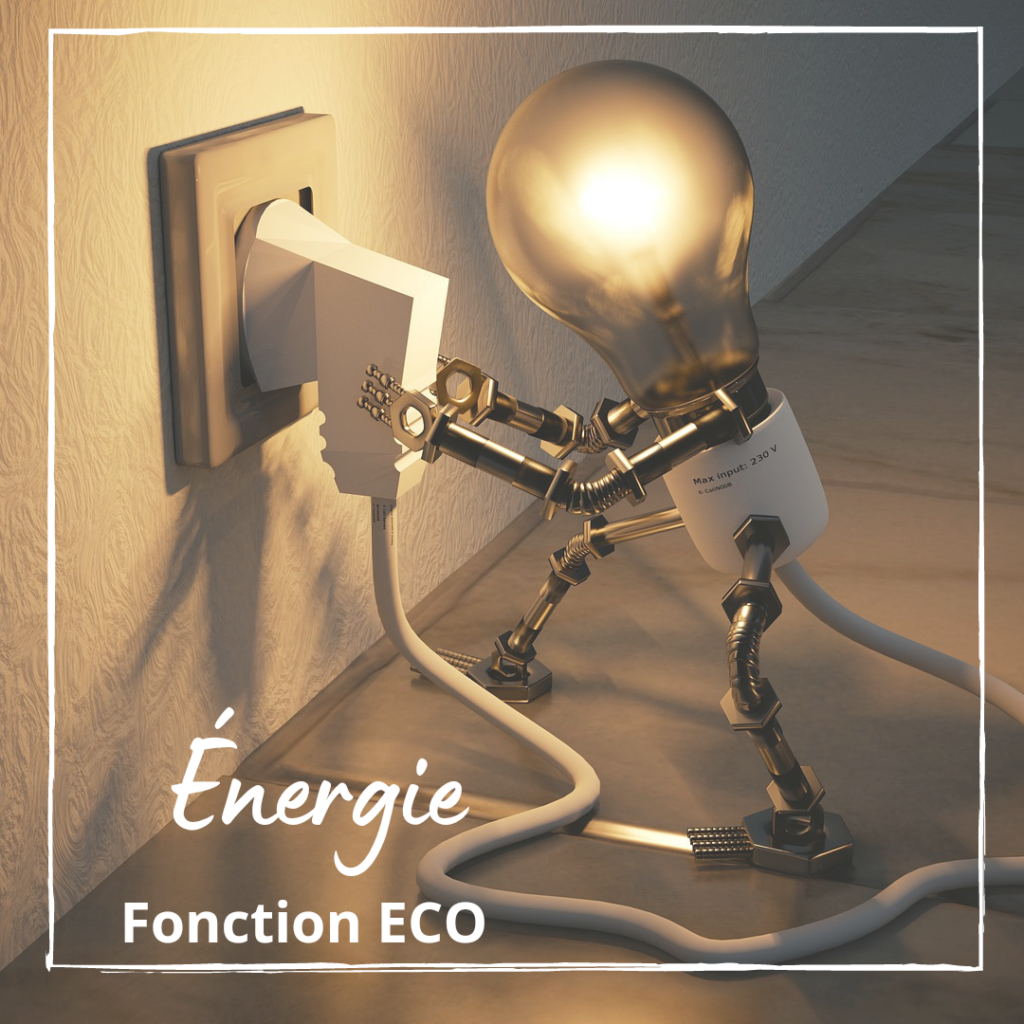
ECO mode
Use the “eco” mode of your household appliances.
The difference between a normal washing program or an “eco” program is essentially the water temperature and the way it is managed by the machine. In “eco” mode, the water temperature will be heated gradually, which is why the cycle lasts longer, but paradoxically saves more energy. Conversely, in a fast program for example, to go faster, the machine will use a lot of electricity to heat the water very quickly.
With the Eco 50° programme, a wash cycle consumes 0.73kWh. Compared to "Auto" mode, you will save approximately 523 kWh per year. This is what you need to power an energy efficient lamp for 28 months.
Carbon Footprint
523 kWh/year is equivalent to 44kgeqCO2
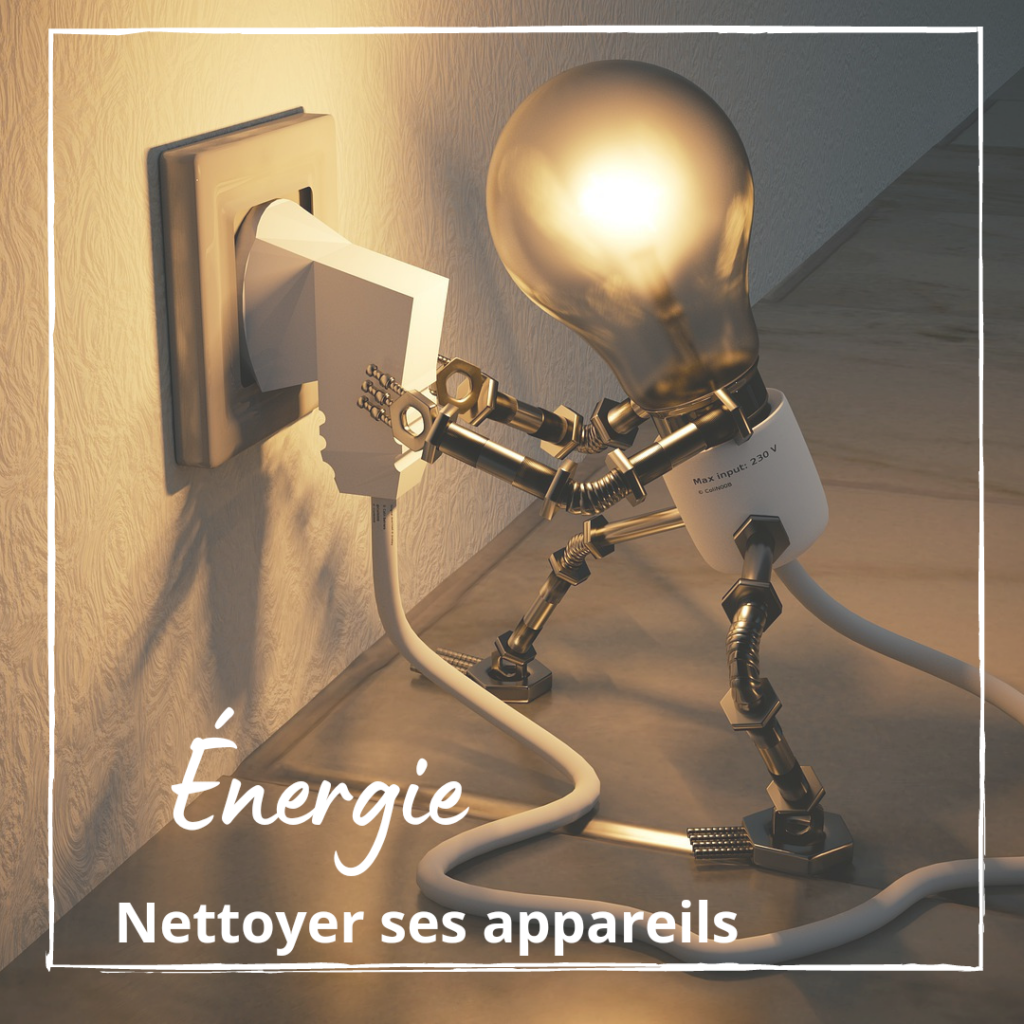
Clean your appliances
Dust the bulbs / the ventilation grille, remove the layer of ice from your fridge or freezer...
Tips :Defrost your devices at least once every 3 months and dust once a year.
Clean your devices, reduce your energy consumption and increase the life of your device. As a general rule, the fridge represents between 10 and 15% of a household's consumption, with an average of 322 kWh per year.
Ice is the result of the solidification of moisture released by food and ambient air. This layer, by being deposited on the walls of the device, obstructs the cooling system (the air circulates less well) and prevents its proper functioning; causing the system to over-consume. Consequence: a few millimeters of this layer of ice are enough to increase by 30% or even double the electricity consumption of the refrigerator or freezer.
Carbon Footprint
6.9kgeqCO2 equivalent per year for 30% overconsumption of electricity in France.
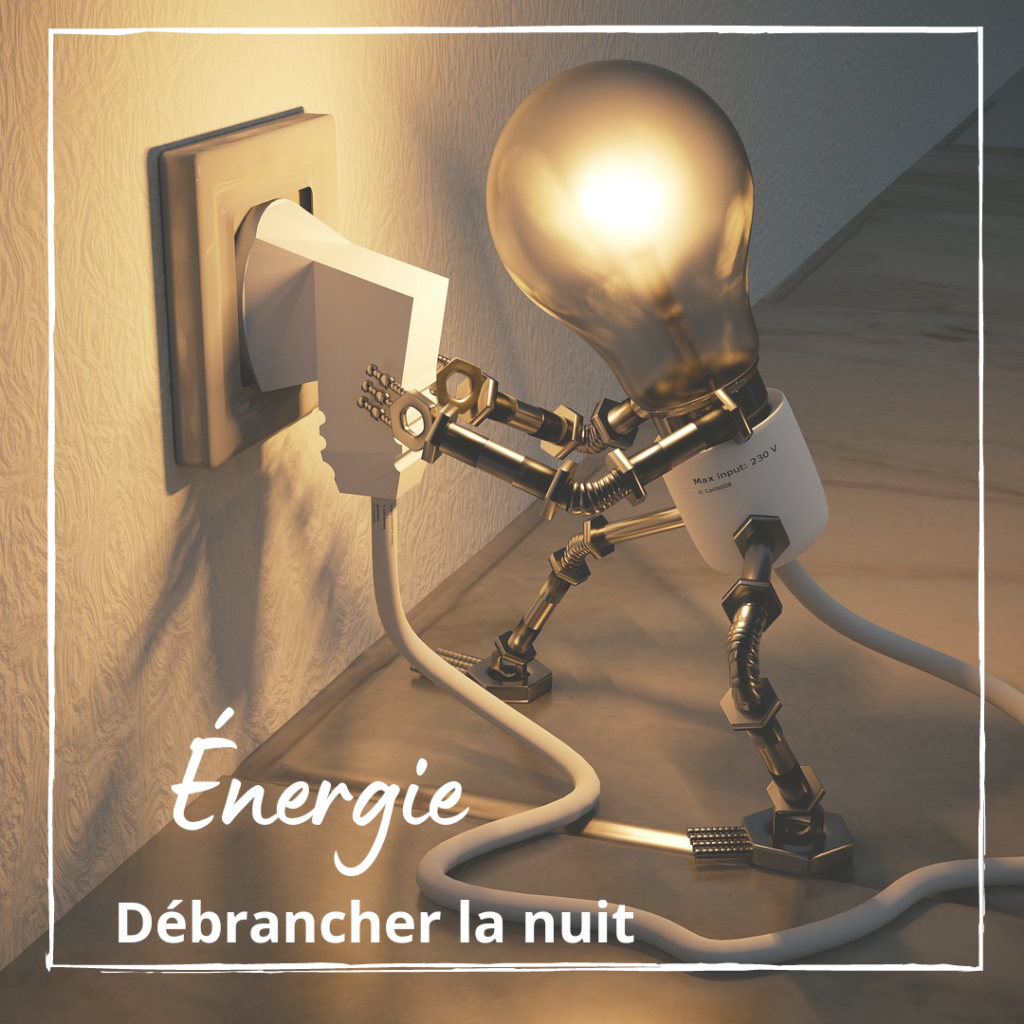
Unplug at night
For 10 days; unplug all unnecessary electronic devices for the night such as your computer, game consoles, kettle, battery charger.
Tip : adopt a power strip with main switch which allows you to turn off all the devices connected to it at once. There are some that can also be programmed to turn off the devices at the desired time.
Electrical appliances even on standby continue to consume energy. This is also true for electrical devices that are turned off but still plugged in. Hidden consumption would constitute nearly 11% of the average annual electricity consumption of each French household according to ADEME.
Consumption depending on the device
Carbon Footprint
Battery charger 9.9kWh/year or 0.8kgeqCO2
Game console 42kWh/year i.e. 3.5kgeqCO2e
Laptop 38.3kWh/year i.e. 3.2kgeqCO2
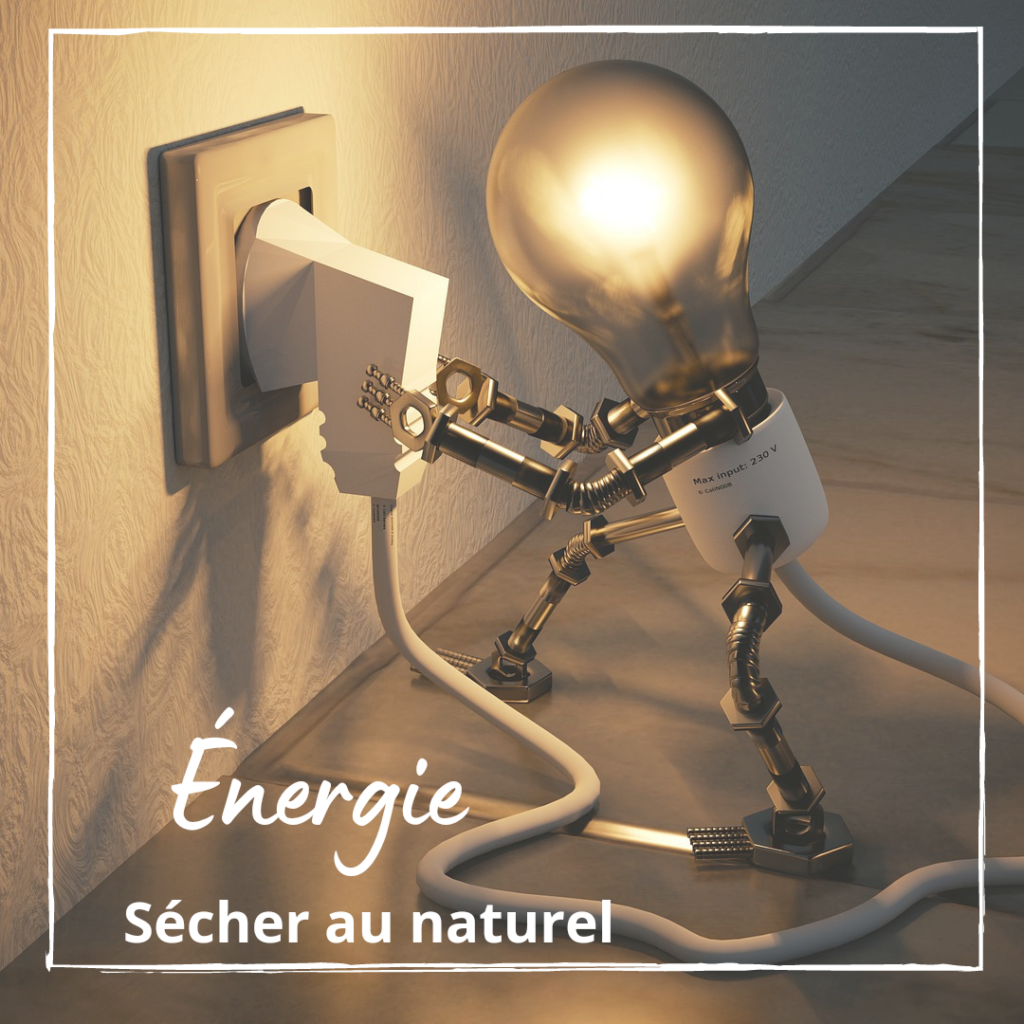
Natural dry
Air dry clothes as much as possible.
Obviously not using the dryer is more ecological because drying in the open air does not require the use of any energy (electricity or gas).
Moreover; avoiding the dryer also allows less wear and deformation of the fabrics, to reduce ironing time, to save money. In short, only benefits!!
Carbon Footprint
Dryer – with evacuation – Capacity 6kg = 266 kgCO2e/unité
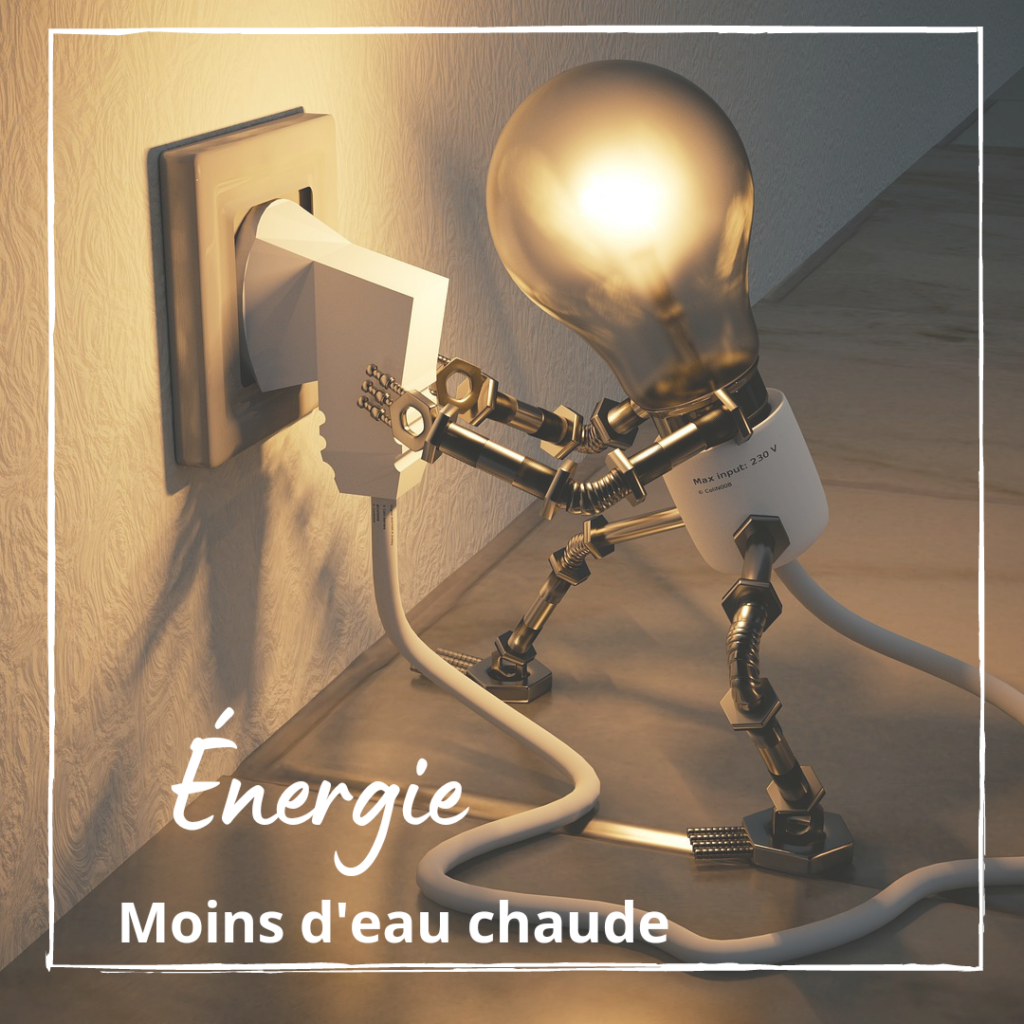
Less hot water
Take 10 min showers and it's even better if it's faster, rinse the dishes and wash your hands in cold water.
Tips : If you want you can get a low flow shower head. Some change colors after 10min to limit your time underwater. Fancy! And we don't forget to turn off the water during soaping. Finally, let mixer taps in the cold water position.
An average shower lasts 9 minutes, which corresponds to 100 liters of water. At European level, this represents 51 billion liters flowing every day. The toilet represents 33% of the water used at home, and domestic hot water is the second largest consumer of domestic energy after heating. Beyond the preservation of water resources and saving energy to heat the water, it is as much less water to manage by the treatment plants.
Very often, the time to wash your hands is too short for the hot water to reach you! Thus, to avoid consuming energy unnecessarily, it is better to use cold water.
Carbon Footprint
Electricity – Domestic Hot Water = 0.0538 kgeqCO2/kWh
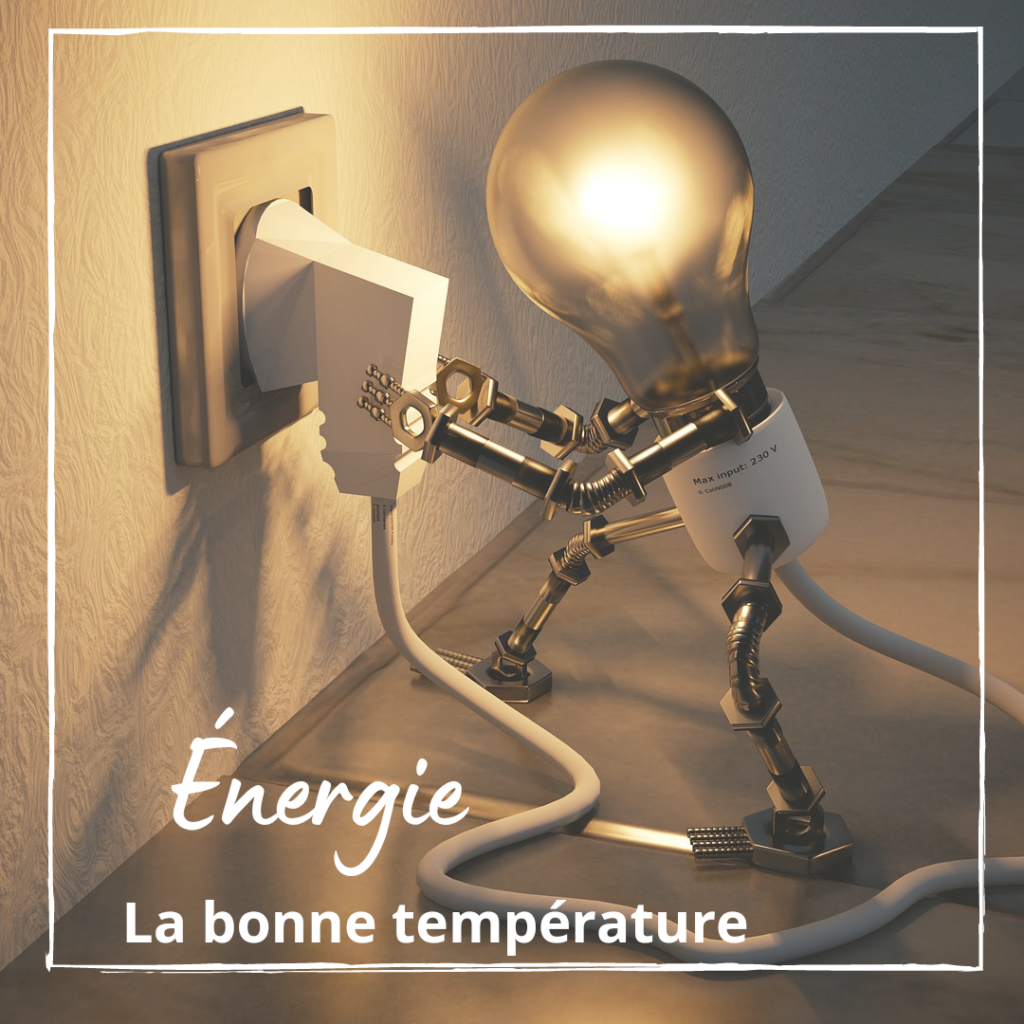
The right temperature
Optimize the temperature for energy sobriety in the home.
Tip : install one or more thermostat(s); or simply room temperature sensors. You will thus know the temperature in your accommodation and you will be able to determine if you can lower it by 1 or 2°C (3 or 5 °F) depending on your comfort.
In the main living room of your home, the dining room or the living room, you can set the temperature to 20 or 21°C (68 or 70°F) in winter. If your thermometer reads 20°C (68°F) but you're still cold, it's a sign of poor insulation, too much humidity or air infiltration.
Poorly insulated housing means cold walls that will radiate cold into the room. Even if your thermometer reads 20°C (68°F), you will feel cold at 20°C (68°F).
Conversely; in summer you will find it difficult to cool your home. Or air conditioning consumes a lot of energy. On average, air conditioning increases our annual energy consumption by 10%.
Actions to save heat without carrying out insulation work:
Put an insulation pad under the doorstep
Put thick curtains on the windows
Open the curtains in front of the radiators at night
Clean and dust the vents
- Dust the radiators
Carbon Footprint
Electric heating = 0.151 kgCO2e/kWh
Climatisation électrique = 0.135 kgCO2e/kW
*Source : ADEME, Agence de la Transition écologique
